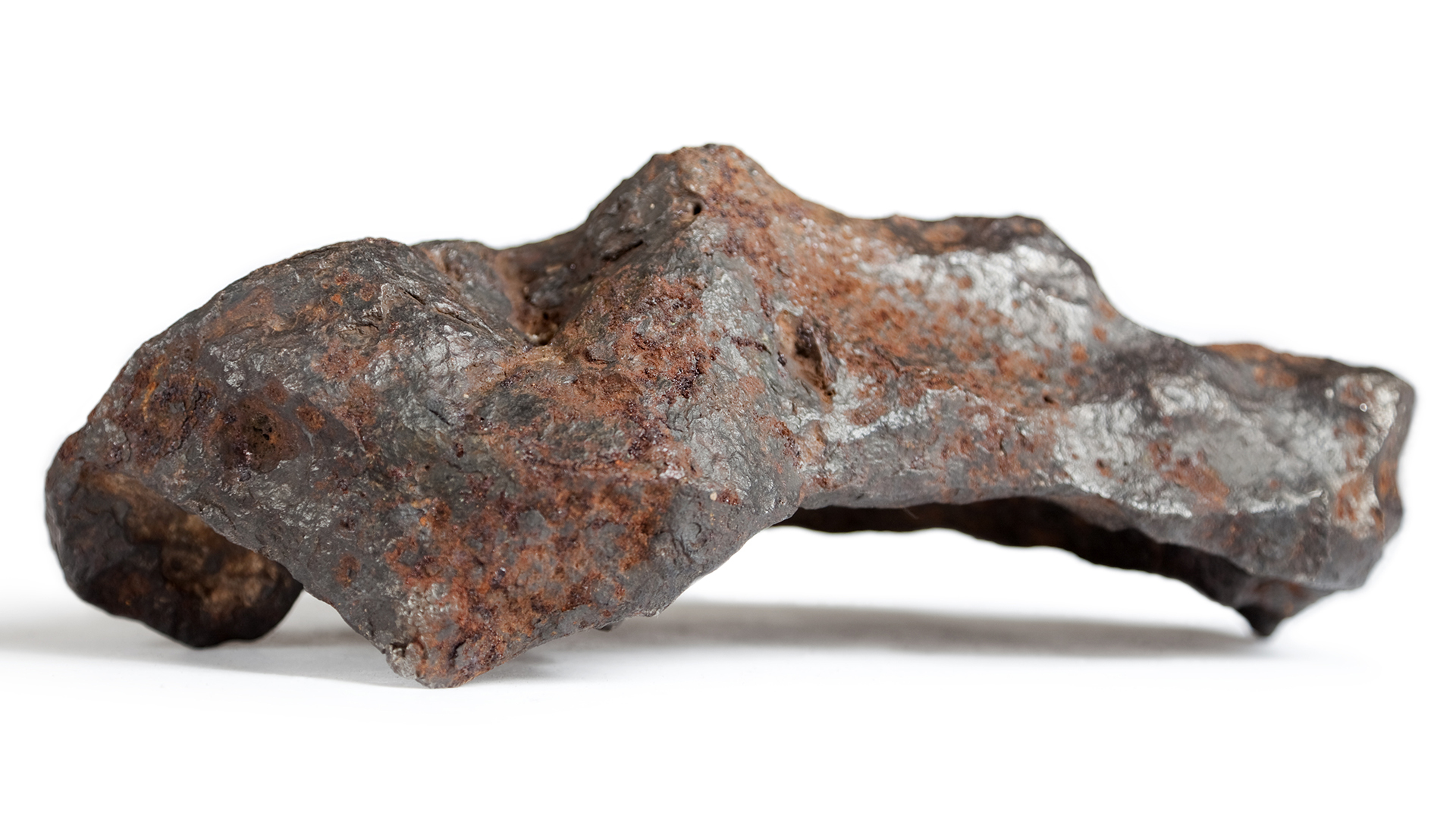Strange, never-before-seen diamond crystal structure found inside 'Diablo canyon' meteorite
Scientists found something unexpected inside a meteorite that hit Earth 50,000 years ago.

While studying diamonds inside an ancient meteorite, scientists have found a strange, interwoven microscopic structure that has never been seen before.
The structure, an interlocking form of graphite and diamond, has unique properties that could one day be used to develop superfast charging or new types of electronics, researchers say.
The diamond structures were locked inside the Canyon Diablo meteorite, which slammed into Earth 50,000 years ago and was first discovered in Arizona in 1891. The diamonds in this meteorite aren't the kind most people are familiar with. Most known diamonds were formed around 90 miles (150 kilometers) beneath Earth's surface, where temperatures rise to more than 2,000 degrees Fahrenheit (1,093 degrees Celsius). The carbon atoms within these diamonds are arranged in cubic shapes.
By contrast, the diamonds inside the Canyon Diablo meteorite are known as lonsdaleite — named after British crystallographer Dame Kathleen Lonsdale, University College London's first female professor — and have a hexagonal crystal structure. These diamonds form only under extremely high pressures and temperatures. Although scientists have successfully made lonsdaleite in a lab — using gunpowder and compressed air to propel graphite disks 15,000 mph (24,100 km/h) at a wall — lonsdaleite is otherwise formed only when asteroids strike Earth at enormously high speeds.
Related: Diamond hauled from deep inside Earth holds never-before-seen mineral
While studying lonsdaleite in the meteorite, the researchers found something odd. Instead of the pure hexagonal structures they were expecting, the researchers found growths of another carbon-based material called graphene interlocking with the diamond. These growths are known as diaphites, and inside the meteorite, they form in a particularly intriguing layered pattern. In between these layers are "stacking faults," which mean the layers don't line up perfectly, the researchers said in a statement.
Finding diaphites in the meteoritic lonsdaleite suggests that this material can be found in other carbonaceous material, the scientists wrote in the study, which means it could be readily available to use as a resource. The finding also gives the researchers a better sense of the pressures and temperatures needed to create the structure.
Sign up for the Live Science daily newsletter now
Get the world’s most fascinating discoveries delivered straight to your inbox.
Graphene is made of a one-atom-thick sheet of carbon, arranged in hexagons. Although research on this material is still ongoing, the material has many potential applications. Because it is both as light as a feather and as strong as a diamond; both transparent and highly conductive; and 1 million times thinner than a human hair, it could one day be used for more targeted medicines, tinier electronics with lighting-fast charging speeds, or faster and bendier technology, the researchers said.
And now that researchers have discovered these graphene growths inside meteorites, it's possible to learn more about how they form — and thus how to make them in the lab.
"Through the controlled layer growth of structures, it should be possible to design materials that are both ultra-hard and also ductile, as well as have adjustable electronic properties from a conductor to an insulator," Christoph Salzmann, a chemist at University College London and co-author of a paper describing the research, said in the statement.
The strange new structures were described July 22 in the journal Proceedings of the National Academy of Sciences.
Originally published on Live Science.

JoAnna Wendel is a freelance science writer living in Portland, Oregon. She mainly covers Earth and planetary science but also loves the ocean, invertebrates, lichen and moss. JoAnna's work has appeared in Eos, Smithsonian Magazine, Knowable Magazine, Popular Science and more. JoAnna is also a science cartoonist and has published comics with Gizmodo, NASA, Science News for Students and more. She graduated from the University of Oregon with a degree in general sciences because she couldn't decide on her favorite area of science. In her spare time, JoAnna likes to hike, read, paint, do crossword puzzles and hang out with her cat, Pancake.










